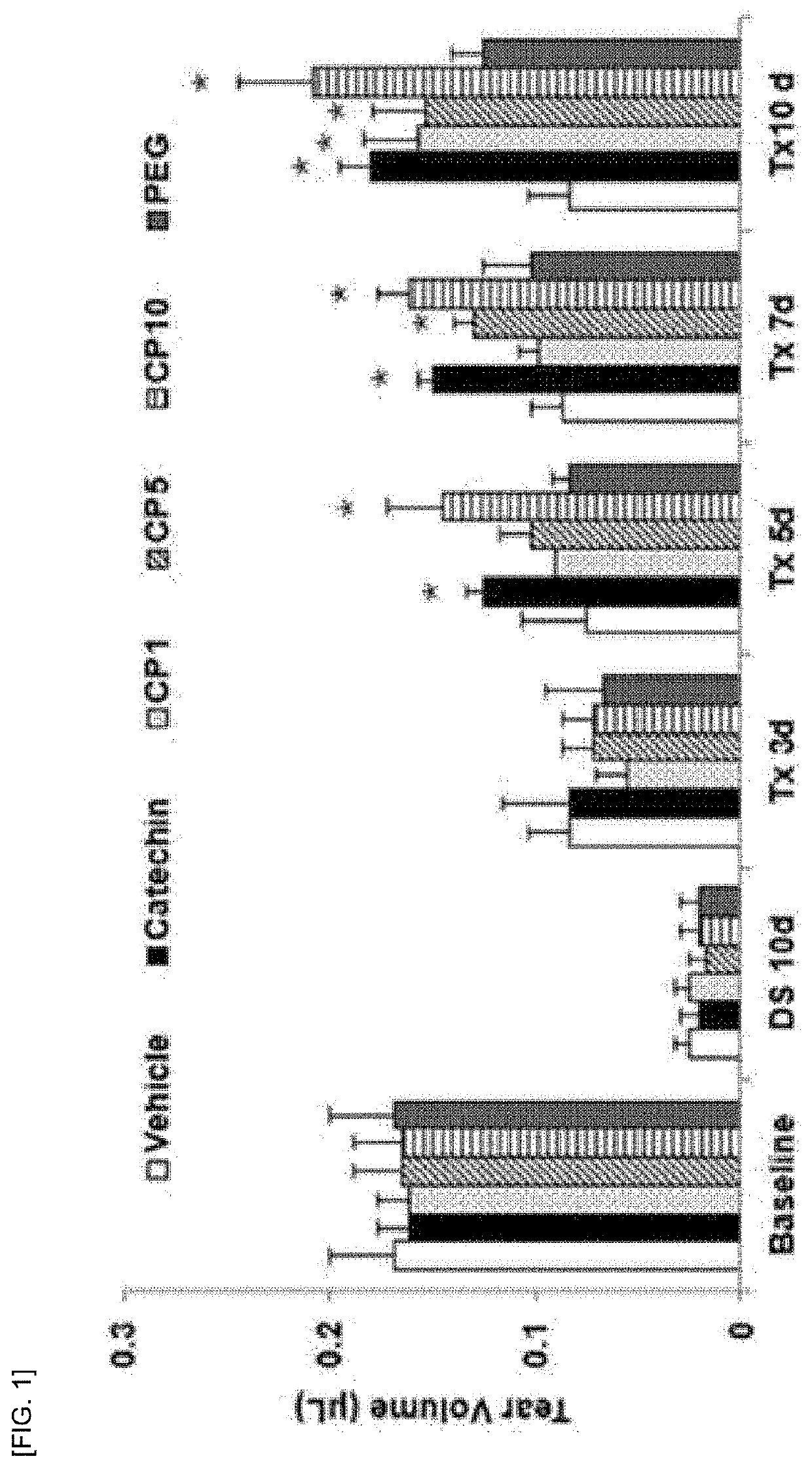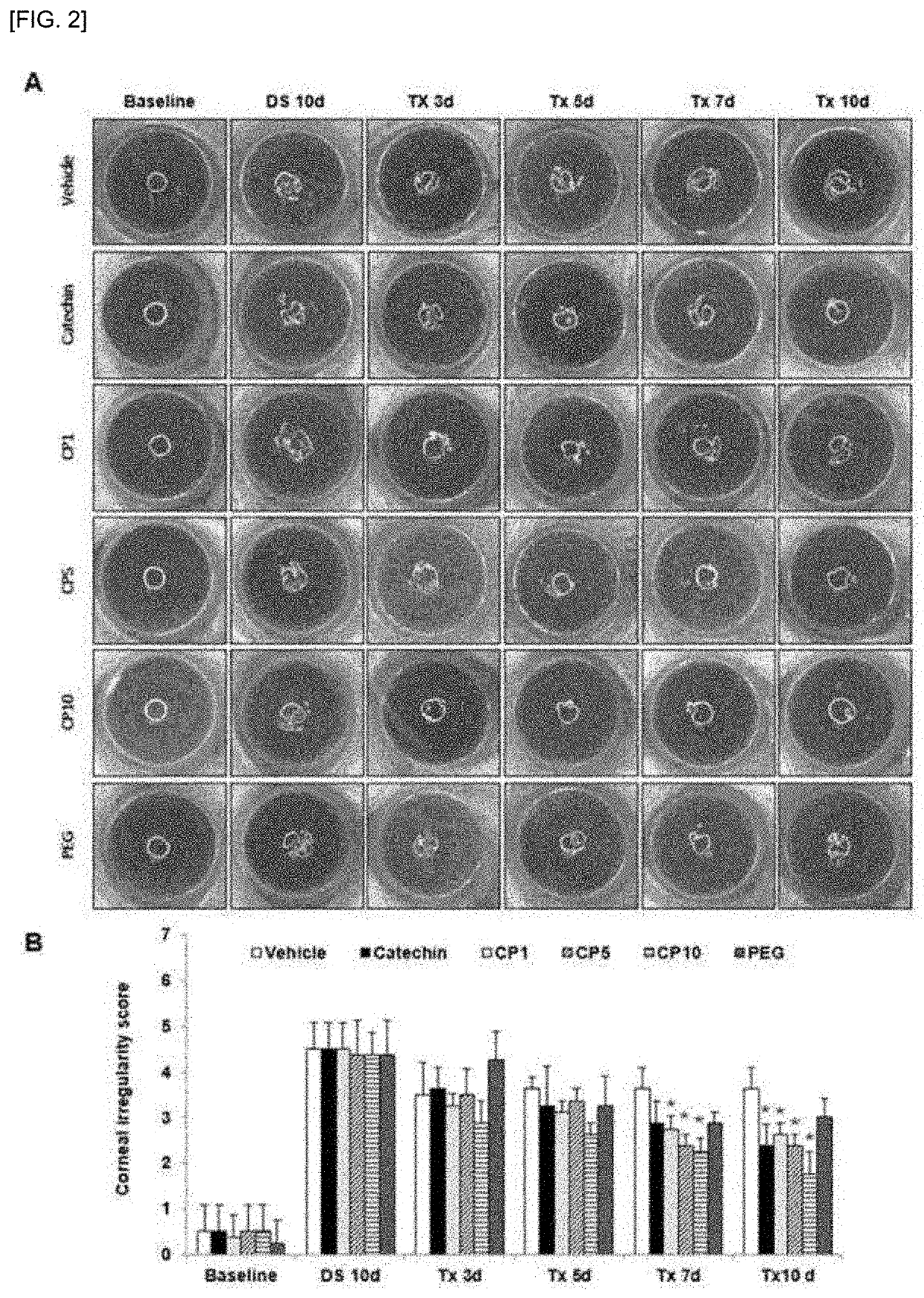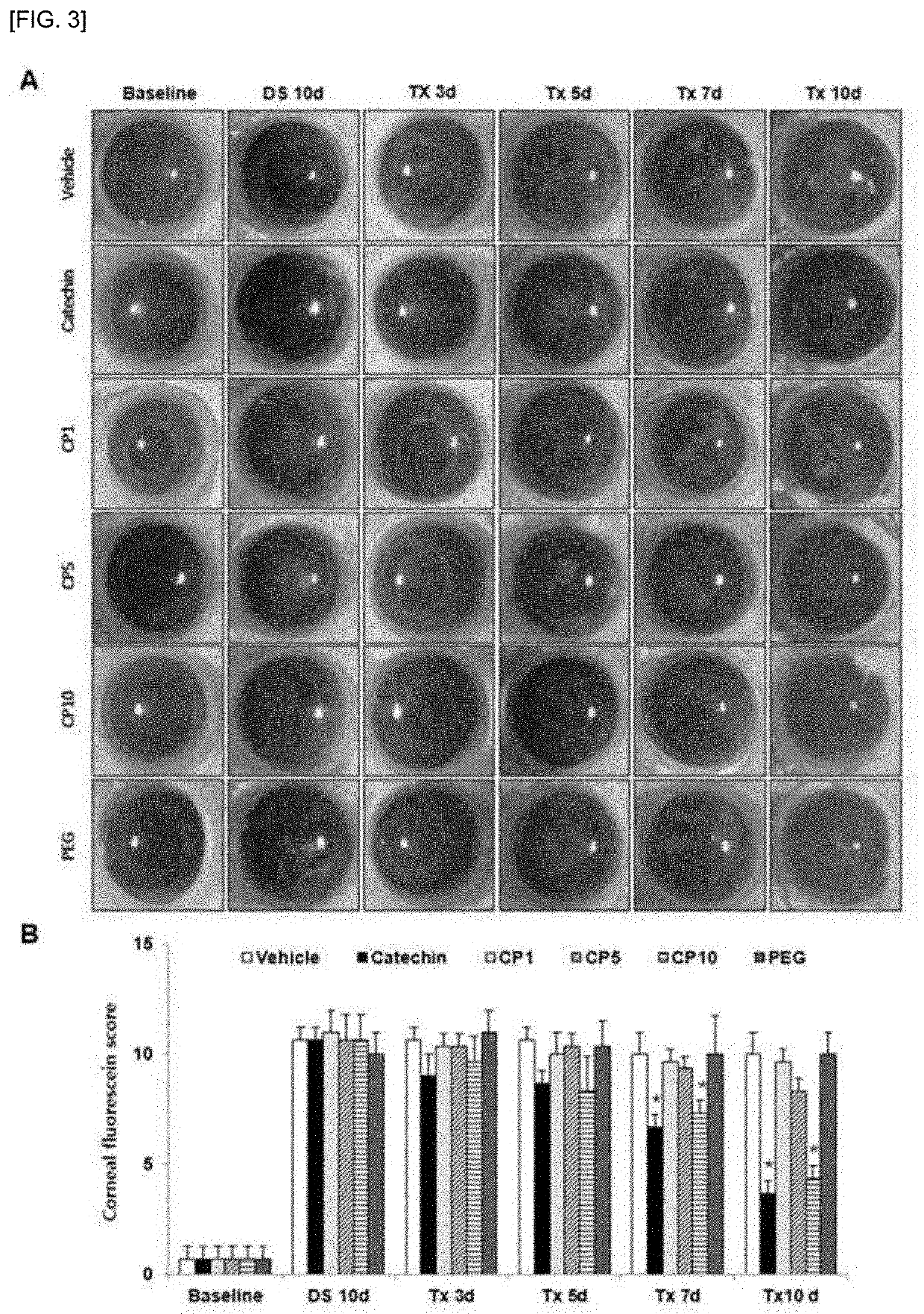Composition, for preventing or treating dry eye syndrome, containing polyethylene glycol and flavonoid nanocomposite as active ingredient
a technology of flavonoid nanocomposite and polyethylene glycol, which is applied in the direction of heterocyclic compound active ingredients, organic active ingredients, and delivery of aerosols, can solve the problems of eye surface damage, conjunctival epithelial damage, and progressive dysfunction of the lacrimal gland, and achieves the effects of increasing the bioavailability of catechin, increasing tear production, and stabilizing corneal epithelial cells
- Summary
- Abstract
- Description
- Claims
- Application Information
AI Technical Summary
Benefits of technology
Problems solved by technology
Method used
Image
Examples
example 2
Mouse Model of Dry Eye Syndrome
[0047]Animal protection and all experimental procedures were carried out in accordance with recommendations by the Institutional Animal Care and Use Committee (No. IJUBPH 2016-005-05) and the ARVO (Association for Research in Vision and Ophthalmology for the use of animals in ophthalmic and vision research) according to the guidelines for animal experiments at Inje University Busan Paik Hospital.
[0048]Eighty three NOD.B10.H2b mice (6 weeks old) in total were obtained from the Jackson Laboratory (Bar Harbor, Me., USA) and performed an acclimatization process for 6 to 10 weeks. Mice were kept in a semi-pathogen free (SPF) facility, and feed and water were provided as free feed.
[0049]Six mice were used for histopathological analysis as a baseline. Seventy seven mice were injected subcutaneously four times daily for 10 days with 500 μg / 200 μL of scopolamine hydrobromide (Sigma-Aldrich) which is a muscarinic receptor blocker. At this time, the mice were exp...
example 3
Tear Production Analysis
[0052]The amount of tears was measured with reference to a previously reported paper (Eye Contact Lens. 2006; 32(6): 272-276). Briefly, the phenol red-impregnated cotton threads (Zone-Quick, Oasis, Glendora, Calif., USA) were placed in the lateral canthus and after 20 seconds, the thread turned red by wet tears was observed with a stereoscopic zoom microscope (SZX7, Olympus Corp., Tokyo, Japan). The amount of tears was calculated by comparison with a standard curve expressed using a basic solution (1.5 L of 0.9% saline and 5 mL of 5 N sodium hydroxide (NaOH)).
[0053]As a result, referring to FIG. 1, the amount of tears in the baseline of NOD.B10.H2b mouse was measured to be 0.16±0.02 μL, and it was confirmed that the amount of tears was significantly reduced to 0.02±0.01 μL by the drying stress. However, after 5 days of catechin and CP10 treatment, the amount of tears was significantly increased to 0.13±0.01 μL and 0.15±0.03 μL, respectively. Treatment of cate...
example 4
Analysis of Corneal Irregularities
[0054]Corneal abnormality was measured with reference to a previously reported paper (Invest Ophthalmol Vis Sci. 2006; 47:2847-2856). On day 10, the white ring image of the corneal surface was observed on 2 hours after the last scopolamine hydrobromide injection and on 1 hour after the last dripping of the catechin and catechin / PEG nanocomposite eye drops under optical fiber ring illumination using a stereoscopic zoom microscope. Corneal smoothness was assessed by grading the irregularity of the corneal epithelial cells reflected in the white ring of the digital image. The reflected ring was divided into quarters and the corneal disorder score was calculated using the 5-point scale based on the number of distorted branches in the reflected ring: 0, no distortion; 1, a quarter of distortion; 2, two-quarters of distortion; 3, three-quarters of distortion; 4, four-quarters of distortion; 5, severe distortion.
[0055]As a result, referring to FIG. 2A, the...
PUM
| Property | Measurement | Unit |
|---|---|---|
| weight ratio | aaaaa | aaaaa |
| diameter | aaaaa | aaaaa |
| concentrations | aaaaa | aaaaa |
Abstract
Description
Claims
Application Information
 Login to View More
Login to View More - R&D
- Intellectual Property
- Life Sciences
- Materials
- Tech Scout
- Unparalleled Data Quality
- Higher Quality Content
- 60% Fewer Hallucinations
Browse by: Latest US Patents, China's latest patents, Technical Efficacy Thesaurus, Application Domain, Technology Topic, Popular Technical Reports.
© 2025 PatSnap. All rights reserved.Legal|Privacy policy|Modern Slavery Act Transparency Statement|Sitemap|About US| Contact US: help@patsnap.com



